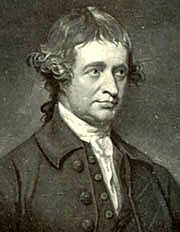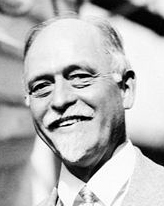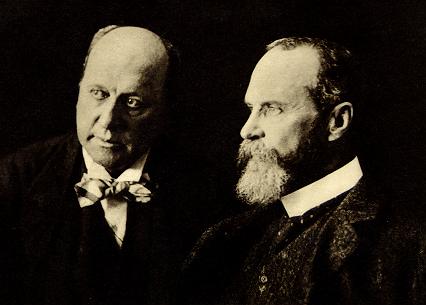
St. Louis Fed Paper Rebuts Bernanke’s Treasury-Purchase Views
Is Ben Bernanke wrong about the potential effects of the Federal Reserve’s purchases of longer-term Treasurys on yields?
 A paper released this week by the St. Louis Fed suggests he might be. Bernanke “seems to suggest that the purchase of a large quantity of longer-term government securities might reduce longer-term rates,” St. Louis Fed economist Daniel Thornton wrote in a research note posted on the St. Louis Fed’s Web site.
A paper released this week by the St. Louis Fed suggests he might be. Bernanke “seems to suggest that the purchase of a large quantity of longer-term government securities might reduce longer-term rates,” St. Louis Fed economist Daniel Thornton wrote in a research note posted on the St. Louis Fed’s Web site.
And with short-term rates near zero, the yield curve would presumably flatten under that hypothesis, Thornton observed.
That, however, is “inconsistent” with the “commonly held view” that long-term rates are influenced by what’s known as the expectations hypothesis, Thornton wrote.
“Under the expectations hypothesis, long-term rates are equal to the market’s expectation of the short-term rate over the term of the long-term asset plus a risk premium,” Thornton wrote. Therefore, the Fed “cannot permanently affect the shape of the yield curve by purchasing securities in one end of the market,” he wrote.
In March, the Fed announced that it would buy up to $300 billion in longer-term Treasury securities in addition to more than $1 trillion in agency and agency-backed mortgage backed securities.
The announcement, on March 18, led to a stunning rally in Treasurys and flattening of the yield curve that appeared to support Bernanke’s statement in December 2008 that buying longer-term Treasurys or agencies in large quantities “might influence the yields on these securities, thus helping to spur aggregate demand.”
But the yield-curve flattening, Thornton noted, “has vanished” since March. So while the Fed has boosted longer-term Treasury purchases and expanded its balance sheet, “these actions appear to have had no permanent effect on the yield curve,” he wrote."
short essays and reports on the economic issues of the day
2009 Number 25
After its March 18 meeting, the Federal Open Market
Committee (FOMC) stated that it had decided to
purchase “up to $300 billion of longer-term Treasury
securities over the next six months.” This decision follows
a speech by Chairman Bernanke on December 1, 2008, indicating
that “the Fed could purchase longer-term Treasury
or agency securities on the open market in substantial quantities.
This approach might influence the yields on these
securities, thus helping to spur aggregate demand.”1
It is commonly believed that the FOMC affects longerterm
rates by setting a target for the overnight federal funds
rate. It is also commonly believed that longer-term rates are
determined by the market’s expectation for short-term rates,
in accordance with the expectations hypothesis of the term
structure of interest rates. Under the expectations hypothesis,
long-term rates are equal to the market’s expectation of the
short-term rate over the term of the long-term asset plus a
risk premium. Hence, if the FOMC reduces its target for
the funds rate and the market expects the FOMC to keep
the target low, long-term rates should decline accordingly.
With the funds rate target near zero, it is essentially impossible
for the FOMC to reduce long-term rates by reducing
its funds rate target further.
Chairman Bernanke seems to suggest that the purchase
of a large quantity of longer-term government securities
might reduce longer-term rates. With short-term rates
already near zero, this would cause the yield curve to flatten,
as long-term rates decline relative to short-term rates. How -
ever, the idea that the Fed can influence long-term interest
rates by intervening directly in the longer end of the market
is inconsistent with the commonly held view—that is, the
expectations hypothesis. This hypothesis assumes that there
is a very high degree of substitutability (essentially perfect)
among Treasuries of various maturities. Under perfect
substitutability, the reduction in long-term rates (with
unchanged risk premiums) would cause investors to sell
the lower-yielding short-term assets and purchase the now
higher-yielding long-term assets.( NB DON ) This arbitrage activity
could cause longer-term rates to rise and short-term rates
to fall. This process would continue until the yield curve
returned to its previous structure. The only possible effect
of the increased purchase of long-term securities would be
on the position of the yield curve: It could shift down if the
purchase of long-term Treasuries sufficiently increased the
supply of credit relative to demand. Under the expectations
hypothesis, the slope of the yield curve is determined by
risk premiums that should not be affected by simply purchasing
assets at one end of the term structure relative to
the other.
Either the Fed affects long-term rates because of the
expectations hypothesis, which means that it cannot permanently
affect the shape of the yield curve by purchasing
securities in one end of the market, or the short and long
ends of the market are sufficiently segmented so that the
Fed can permanently affect the slope of the yield curve by
intervening in one end of the term structure relative to the
other. However, in the latter case, the Fed’s ability to influence
long-term rates by controlling the short-term rate is
attenuated by the zero lower bound.
The observed effect of the FOMC’s decision to purchase
longer-term government securities on the term structure
is consistent with the belief that there is a high degree of
substitutability of assets across the term structure. An
announcement effect occurred when the FOMC made
known its intention to purchase up to $300 billion in longerterm
government securities: Longer-term Treasury yields
immediately declined by about 50 basis points. In contrast,
shorter-term rates were unaffected by the announcement.
The announcement effect resulted in a significant flattening
The Effect of the Fed’s Purchase of
Long-Term Treasuries on the Yield Curve
Daniel L. Thornton, Vice President and Economic Adviser
Chairman Bernanke seems to suggest
that the purchase of a large quantity of
longer-term government securities
might reduce longer-term rates.
of the yield curve. Figure 1 shows the
coupon yield curve the day before and
the day of the announcement: There was
very little effect on rates for Treasuries
with maturities of less than a year, but
the announcement effect gets progressively
larger as the term to maturity
lengthens—until about 5 years. (For
maturities of 5 years or longer the
effect is about 50 basis points.) A similar
announcement effect is reflected in the
wide range of longer-term corporate
bond yields.
The FOMC made good on its
announcement and the Fed increased
its holdings of longer-term Treasury
securities by about $59 billion between
March 19 and April 29, 2009. During
this period Treasury yields responded
to Fed actions as well as other changes
in the economic and financial environment.
Figure 2 compares the yield curves
on March 17 and April 29. The marked
flattening of the yield curve associated
with the FOMC’s announcement has
vanished. Instead, the yield curve has
become more steeply sloped, as longerterm
Treasury yields have risen while
short-term rates have declined.
There have been many events that
markets have responded to since
March 18. Hence, it is difficult if not
impossible to attribute the steepening
of the yield curve to a particular factor.
The Fed has increased its purchases of
longer-term Treasuries and expanded its balance sheet by
about $150 billion since March 18. Whatever their immediate
effect, these actions appear to have had no permanent
effect on the yield curve.
1 Bernanke, Ben S. “Federal Reserve Policies in the Financial Crisis.” Speech at
the Greater Austin Chamber of Commerce, Austin, Texas, December 1, 2008.
Economic SYNOPSES Federal Reserve Bank of St. Louis 2
research.stlouisfed.org
Posted on May 18, 2009
Views expressed do not necessarily reflect official positions of the Federal Reserve System.







































No comments:
Post a Comment